What is the Metaverse exactly? And what can someone experience once plugged into it? Drawing Capital managing partners Sagar Joshi and Sean Van der Wal offer their insights about the benefits and risks of this not-so-science-fictional landscape, as the potential for a new, multi-trillion-dollar digital economy looms on the horizon.
The following is a summary of a live audio recording and may contain errors in spelling or grammar. Although IBKR has edited for clarity no material changes have been made.
Steven Levine
Hello, and welcome to IBKR Traders’ Insight Radio Podcast. I’m Steven Levine, senior market analyst at Interactive Brokers, and your host of the AI Exchange – this is for all the latest insights into how artificial intelligence is transforming market sectors and how traders can use this information to make more informed investment decisions.
One area that seems to be grabbing the attention of the markets, as well as the public imagination, is the much-anticipated development of the Metaverse. This seems to be making some significant strides in the technology space by potentially opening-up a rabbit hole of opportunities – not only for AI-driven applications, but also for those in just about every aspect of digital creation – from digital real estate, art, cryptocurrency, smart contracts, gaming, social events like concerts…. These all seem to be coalescing into an entirely new economy, which some analysts think could evolve into a multi-trillion-dollar industry.
This is a massive concept that, to be honest, is extremely challenging to wrap my head around. That’s why we’re lucky to have Sagar Joshi and Sean Van der Wal, both managing partners at Drawing Capital, here with us today to help draw a clearer picture of what this all means.
Drawing Capital is an investment management firm headquartered in Silicon Valley. It uses its expertise in finance and data science to seek compelling investment opportunities in the innovation economy with an approach akin to a venture capital fund in the public markets.
Welcome Sagar and Sean, very happy you could join us.
Sean Van der Wal
Thank you, Steven. It’s a pleasure to be here.
Steven Levine
It’s really fascinating, this metaverse … or metaverses? I understand it’s not one single metaverse but multiple. Is that right? And it’s difficult to describe for me exactly what a metaverse is, and you’ve done a great job of this in your recent webinar with us. I understand it involves the physical world intersecting with augmented and virtual realities, but this is very abstract to me. So, I thought maybe we could start off with what an experience in the metaverse might be like? Who’s it intended for? And what kind of novel experience would they have in it?
I mean would it really be like what we see in the movies or on TV?
Sean Van der Wal
Yeah, absolutely, and I think it there’s a common misconception about what the metaverse is, and there is one very interesting point originally made by Mark Zuckerberg that I think it kind of changed my way of thinking about this and may be helpful for others as well – where the metaverse is not a place or places necessarily, but rather it’s a time when the primary ways we live our lives, and the majority of our time is spent actually immersed in this virtual technology. In the way that you describe multiple metaverses in your question, I think it’s often helpful for people just to describe these, or think about these as multiple platforms. And these platforms can span either specific use cases, or even maybe providers here, and I’ll give you a few examples just to provide some more context for the audience.
One segment could obviously be around gaming. This has kind of been the first category that people approach this with. And the way we think of video games today – it’s likely that each game will have its own virtual environment or platform that’s entirely separate from other games and applications.
Or to address the provider approach I mentioned earlier: Maybe you have a Microsoft with Activision Blizzard, or Meta Platforms develops a broader virtual environment, where you can play games on their platforms, socialize with others, join virtual conferences all in one place.
Now, to give a very specific example of one of these use cases is Facebook or Meta Platforms has developed a product called Workrooms. So, instead of sitting on a Zoom call, we’re all sitting around a virtual table able to interact with each other as we might in the office.
You might ask, ‘Okay, so how’s this really different? What benefit does it actually provide over the normal Zoom calls that we have today?’ Well, there’s actually one pretty amazing and recent development here around spatial audio that I would say is just one of many developments coming down the line. Say we’re sitting around this virtual table: I could lean over to you, Steven, and just whisper something that only you and I can hear, as I might in a real conference room.
Additionally, I think it’s helpful to understand that the human brain is hardwired to recognize certain things when we interact with one another. An example of this is eye contact. Right now, on Zoom or Google Meet or whatever virtual chat software you’re using, it’s virtually impossible to make direct eye contact with someone. In order for you to think I’m meeting your eye line, I need to look directly into the camera, which obviously means I’m not really looking you in the eye. So, there’s this fundamental disconnect in communication and the ability to build trust with existing platforms.
I think it’s also important to note that while using this Workrooms example, it currently uses digital avatars that look a little bit more cartoonish and simple, but Mark Zuckerberg noted on a recent podcast that they expect avatars to become photorealistic in the next three to five years. Meaning that if we elected to do this podcast in Workrooms, it would very much look like we’re all sitting around the table. You could see the wild arm gesticulations I’m doing right now and, in his vision, would be nearly indistinguishable from watching an actual meeting take place.
Just to wrap up the answer to your initial question, the metaverse isn’t one place or multiple places that everyone goes to like the city necessarily, but rather people should think about this in terms of maybe apps on a phone. There are different use cases or needs for each there, and the key differentiation here is how we interact with each other through those apps in a more immersive, enriched environment. And, ultimately, the concept of the metaverse is the time we shift from operating mostly in this 2D digital world in real life to more immersive digital technologies, and those can range from, simply watching movies on Netflix, to conference calls and collaborative work rooms, to playing games with family and friends.
Steven Levine
I mean, this is really, really fascinating and it seems to me that there is a difference in the actual experience of meeting in a conference room versus meeting in a Metaverse conference room. So, Are there benefits to the Metaverse conference room versus actually meeting around a table?
Sean Van der Wal
Yeah, I would say I from a company standpoint, first and foremost, I mentioned the trustability.
There are several companies now, startups especially … I mean, we see them down here in the valley …they’re globally distributed. There are people who have been working at the same company for two years and have never met each other.
Steven Levine
Yeah, that’s right.
Sean Van der Wal
Having this ability to meet people, build this trust in communication. It just really helps the relationship. It helps productivity and efficiency. We have family overseas, like many other people. If through this entire period of going through the COVID pandemic, if we were able to better connect, with grandparents, with aunts and uncles and things like that, maybe you could sit around at a dinner table together versus sitting there trying to coach my 90-year-old grandmother on how to best use FaceTime. If we could all just sit down together, seemingly have a normal conversation like you are there. Absolutely, I think there are benefits.
And coming back to where we are in terms of stages and where the benefits are today – a key focus here is really picking up again on these very small little social cues: eyebrow movements, facial expressions, again, eye contact. Things that are completely missed today just using the existing platforms.
Steven Levine
So, everything that you would be able to express in a Zoom call, you could still express in these virtual conferences or metaverse conferences.
Sean Van der Wal
Exactly, exactly.
Steven Levine
And you said about two to three years. Is it really that short of amount of time that we’d be able to have this kind of experience, or is there a target year involved for a fully functioning metaverse? When can we expect all of these kinds of experiences to take place?
Sean Van der Wal
I think it depends on what you’re looking at. So, the two to three years I had mentioned there, I think is simply for bringing this photorealism into the fold for some of these collaborative environments, like Workrooms. But if we’re looking at a broader adoption of the metaverse, a lot of the research that we’ve conducted … the projections for large-scale adoption typically fall around the year 2030 or about 8 years from now.
I think it’s also important to note that many people tend to think of gaming or social applications in the individual consumer driving adoption here, but I believe that at least in the initial or the early spike in adoption that can help fuel future growth, will be institutionally driven.
So, for productivity and work-related apps … if there’s a way to increase the productivity of a workforce by 5% or 10% consistently through some collaborative experience, many large companies with a deep bench of resources would opt into to buy these devices for employees to drive output efficiency and general enjoyment of, again, this remote work environment. And that competitive advantage for remote workforces could translate to several billion dollars of market cap over the next few years given such a performance improvement using that technology.
Steven Levine
Yeah, it’s an amazing potential for growth. I can just see how many different companies can be involved in this … and you presented those in your webinar as well. There are many different layers to the metaverse and that each layer has opportunities for companies and opportunities for growth within it. I think I recall a Goldman Sachs analyst saying it could be an $8 trillion industry, or at least a multi-trillion-dollar industry over time. Do you have any projections? Is it 2030 that we see a complete economy for the metaverse that is a multi-trillion-dollar industry?
Sean Van der Wal
Yeah, 2030, based on the Goldman Sachs’ research that you had stated, and another one is Roundhill Ball. Several companies have obviously given projections here. Those largely fall near or around the year 2030.
And I think in terms of phasing these things in, I don’t think it’s going to be an all at once, ‘Hey, here’s everything is ready to go right now.’ These are kind of the phases. A big area of this now is gaming and, again, productivity from a social aspect. So, you’ll see kind of these use cases in different phases start to happen.
And again, I mean it’s something — that’s why it’s so exciting as a new frontier, when we think about social media really forming, and all of these different platforms. It takes a long time, but you have all of these exciting developments along the way that will continue to progress.
So, I think it’s much more sequential that way as opposed to just sort of a waterfall everything at once. ‘Hey, it’s 2030, everything is ready now.’
Steven Levine
Yeah, now I can completely understand that…. And when you mention gaming, it’s kind of funny, ’cause all of the references that I mentioned earlier about the different movies and TV shows: Ready Player One, Free Guy, Black Mirror …they all centered around gaming, which I thought was very, very interesting.
I don’t know if games can really be like what they’re presenting in those shows. I don’t know if you’ve seen any of them, but it’s very, very interesting how the avatars can really be in a complete world of their own, with its own rules and everything else … but it seems so lifelike.
Sean Van der Wal
I’ve seen a couple of those movies, I have not seen all of them, but I absolutely think it will approach that realism. Again, won’t happen overnight, but just to give an immediate example here of something like – just how quickly this happens too is incredible to me – but a company called Didimo, I think they’re actually based out of Portugal, but they create human-like avatars that resemble the user in under 90 seconds…
Steven Levine
Wow.
Sean Van der Wal
…which is absolutely shocking, so that’s where we are today.
Again, we’re talking about something here that will be a decade out almost. In the speed at which these things develop, the amount of resources that are going into the theme and category now with all of these very, very big companies – NVIDIA, Facebook, Meta Platforms, everyone really across the gamut – looking at this area and starting to allocate more human capital and financial capital behind it, I think that that will just accelerate even more quickly.
Steven Levine
Yeah, I mean, I’ve noticed a ton of ETFs very recently being introduced to the market – these are all metaverse-themed exchange-traded funds – and some of them launched really recently. The ProShares Metaverse ETF just launched March 15th of this year. You mentioned Roundhill Ball … Roundhill Ball’s got a ‘Metaverse ETF’, Fount Metaverse ETF, Subversive Metaverse ETF … and some of them seem to have overlapping holdings. But, as you mentioned, NVIDIA, Microsoft, Apple, not surprisingly, Meta Platforms is in there, Amazon. There are a ton of others.
What can you tell us about some of these companies in terms of their involvement in the creation of the metaverse? Where do they stand in the creation process?
Sean Van der Wal
I think a helpful way for listeners to kind of think about this is it’s very similar to other technologies where you have this sort of hierarchy, or layers of enablement. You mentioned that as well from the from the webinar, but these layers consist of things like hardware, of course, where companies like NVIDIA or AMD would play a part in manufacturing the chips that are needed for the software to actually run smoothly on the headset.
The human interface layer, where companies can create value by providing specialized inputs into the wearable technology that end users receive…display companies like VaVita or Realview, for example; asset creation in asset marketplaces that establish a transaction layer between users and the ecosystem. Examples of that are Opensea or CGTrader, for example, which are in the asset marketplace space.
And then, finally, I mentioned that company Didimo that creates avatars.
So, the reason I think also this is so exciting from an investor, and also a creator standpoint, is that there are so many opportunities across the technology stack for the metaverse hardware, software, infrastructure, and developer tools. Think about how many developer productivity tools are out there now: Monday, Asana, Atlassian products. I mean, there’s a huge stack, and for all the verticals that exist for real world use cases today, there will likely be a counterpart in the metaverse.
So, as you mentioned, Steven, and there will certainly be overlap from existing large cap tech companies – for example, Microsoft, again, who made the near $70 billion acquisition for Activision Blizzard, and Facebook or Meta Platforms, who’s obviously completely rebranded around the opportunity – these companies will, of course, have existing products and services from which they derive their revenue, but are investing more resources into this exciting theme, and I think that’s good for investors who like a diversified approach, or might want to ease their way into the metaverse exposure while they see some of these developments play out.
These are really publicly traded companies you’re going to get access to in some of the products and ETFs as you mentioned. In addition to companies like Roblox (is a gaming company), social media companies like Snap, which already have some very advanced software for things like facial recognition and augmented reality capabilities, where you can put all these different filters over your face.
And for those that are looking for more pureplay metaverse companies, that may be more difficult in an ETF format today just given where we are at in terms of progression with different companies, new technologies coming to market, since again we’re in the very early stages. Those can really only be invested via private markets or venture capital, for example. So, as a result, in these ETFs you will probably have, for now, these much larger, multi-faceted, large stack, large cap tech companies that are participating in different segments.
Steven Levine
Well, it’s really, really incredible how the world is changing so quickly. It’s amazing. I did see Apple developing, or perhaps they’ve already developed, AR glasses, or augmented reality glasses. And I I’m not sure exactly if you can do anything with them outside of a stationary type of experience on a desktop computer or something? I mean, can you walk around with augmented reality glasses and see a kind of different reality? Is that what they’re doing?
Sean Van der Wal
Yeah, so I mean a lot of the augmented reality and the glasses are very interesting. But I mean, this is something that gets used by Apple as well, very commonly now, too. You just go to their website right and you can see an augmented reality of their different products. You can do the 360-degree view, I mean there are different ways for people to see what different… this isn’t Apple necessarily .. but see how different furniture looks in their house. So yeah, I think that is an early stage. I would also say augmented reality and virtual reality, in the context of the metaverse, here, are likely two very different things. So, if you’re if you’re wearing Apple’s glasses and you can see things just layered on top of what the existing world is.… I mean a very, very basic example of that might be heads up display in a car. But the virtual reality in the metaverse kind of more in the context of the discussion here today, involves being fully immersed – not necessarily layering something on top of what you see in front of you.
Steven Levine
And artificial intelligence factors in here as well. I don’t know exactly how to parse that out, or whether that’s a separate kind of component. But maybe Sagar can clear that up for me.
Sagar Joshi
It’s a great question, and there certainly is an intersection point between AI and the metaverse, and so double-clicking further on a couple of points: There exists a strong relationship between data quantity and quality of data science models for applications in artificial intelligence and machine learning. And so, how that really reinforces itself is that high quality proprietary data that is merged with a technology platform can generate positive network effects and then possible exponential growth opportunities.
And so, by definition, positive network effects implies that as a company gains more customers or more data than all of the existing customers may also benefit via a better product or service, which creates an accumulating competitive advantage with increasing marginal utility, with greater size, scope, and scale. And so, as a result, and with the benefits of software, Internet scale-businesses can continue to grow at scale, and potentially in the investor perspective, potentially command significant company valuations.
And so, coming back to your reference of AI. In computer science, of course AI stands for artificial intelligence, although, I’d also like to juxtapose this a little bit and add a new variant, so to speak, there. For everyday people, many people may not necessarily actually see ‘Artificial intelligence’, and I put ‘see’ in air quotes, but they definitely do see augmented intelligence. And expressing that divergence a little bit, augmented intelligence is the occurrence of individuals having access to computing and connected devices. So, that could be your iPhone, it could be computers, your Apple Watch. Sean also mentioned the heads-up display – or cars having blind spot detection and backup cameras…. These are all interconnected, or other devices that we have with us on a pretty reoccurring basis for many Americans.
But the situation is that the human, or the individual, still remains in control and can leverage these computing devices to augment one’s intelligence or experience. And so, as a result, one can perhaps presume that the smartphone has now become a digital extension of our physical selves that operates as a remote control for the digital and physical experience that we live in today. And so then, of course, these comments can then potentially expand and extend towards both current reality, as well as future developments in the metaverse.
And I guess as a closing point on applying AI and having a three-step framework and how it can be used for businesses in the benefits of AI. The first out of three steps would be, in in my view: Is there measurable return on investment? Of course, companies want to see some type of return. The second is that is there some type of strategic corporate mandate towards a goal? So first, setting the goal but then working backwards to find that road map so that that goal can be optimized for and hopefully achieved. And then the third framework would be: Are there retained capabilities inside organizations, so that AI models can be built, retrained and improved over time? So, those are some of the thoughts I would think about AI and then how it applies into the metaverse there.
Steven Levine
There seem to be an infinite number of potential benefits from interacting, or interfacing, with the metaverse. I mean both from a standpoint of transactions – transacting for monetary purposes – as well as enabling what would otherwise be impractical. You mentioned the smartphone as being an extension of our ability to navigate the physical world, which is like a remote control for the physical world, for our experience. It’s making what would otherwise be impractical, or perhaps even impossible in the physical world, something that is practical.
There also seems to be an equivalent amount of risk. There can be damage done from all this, I suppose. We’ll take communication for example. Can you walk us through the benefits and risks of virtual versus physical social interaction? I suspect there’d be an even greater disconnection between individuals in the physical world. I suppose there’s already some sort of disconnection from chatting with each other, as opposed to getting together in a coffee shop and talking physically, I suppose.
I guess there’s also issues regarding privacy or trust in information. There’s a lot of disinformation. A lot of people who pretend … aliases, pseudonyms, etc. So, maybe you can just walk through a couple risks a person could face in terms of their communication in in the metaverse.
Sagar Joshi
There’s a lot to unpack there. And so, at a high level, the key benefits of innovation and digital technologies are immensely splendid in their abilities to do more with less or said differently, enable greater value creation with less resource consumption. And of course, at the same time you mentioned some of the risks and ambiguities, and I’ll mention that in a little bit, but before I do, I’d also like to quickly touch on some of the prior points in your question.
And so, the consumer shift towards online activities is a long-term trend and was accelerated by the coronavirus crisis. During a coronavirus-induced lockdown environment, many people relied on digital technologies to remain connected and manage various aspects of their lives, giving rise to topics such as e-commerce or food delivery apps, of course video conferencing, gaming, telehealth, cloud software companies, RNA development, and so much more. And increasingly, it seems like people will live in two separate or interconnected worlds – in the real physical environment and in a digital environment.
And so, how that possibly unfolds there is that one person may have a similar or different persona and identity as they traverse between real life and digital life and augmented reality, and the intersection of the physical and virtual worlds represents that hybrid world. And so, additionally the directional area of communication is more online, more immersive, and more in volume. As consumers spend more of their lives online, whether it be computers, phones and other connected devices, more content consumption and production will occur online. With more online interactions, and then with the trending metaverse topic, it’s also important to acknowledge some risk factors that you alluded to in your question there. And so the most obvious risk factors include privacy and safety risks, also the spread of misinformation or disinformation, decreasing level of physical connection with others, and cybersecurity risks. And additionally, there’s been a rise in multiple personas, changing roles and increasing ambiguities of identities, all of which can contribute to identity management, which is in fact an entirely separate topic within the general cybersecurity industry.
And so, several forms of trust in the virtual world will carry over from physical worlds, and then at the same time or simultaneously, there will be new forms of establishing digital trust. And, for example, today we have two factor authentication that already exists for online accounts, so we’re already seeing development in the digital world that may not necessarily be present, or was present in the physical world, but at the same time some of those physical characteristics may move into the digital world as well.
And so, overall, in circling back to a comment within your question, my opinion on the key takeaway is that because the metaverse is in its early building stages, there seems to be nearly endless possibilities of imagination, creativity, and value creation in the metaverse with the simultaneous acknowledgement of ambiguities and risks in future outcomes.
Steven Levine
Yeah, I can imagine, for example, if the move towards, say, establishing your identity or certifying your identity, say with biometrics or something to that effect…it seems to put in more of your personal data in ways that perhaps could be accessed as well, and so the more you give into the system, it seems that there’s that much more risk of information that can be taken from you. And I don’t know if you know those kinds of concerns end up being something that gets factored into the metaverse as a place where perhaps a great lot of information can be stored and harnessed and stolen, I suppose.
Sagar Joshi
Yeah, I think it’s a good comment there, and certainly is a risk factor, and especially with the prevalence, as I mentioned earlier, with a lot of these data science models, training and training, and effectively ingesting more and more data in order to better train their models. But also, equivalently, like you mentioned, is the rising amount of input that is being given from the consumer. We already see this with unlocking the iPhone here, is with Face ID. You’re effectively giving that facial recognition directly to Apple and their security team.
Now, I would say, overwhelmingly, most people have immense trust for Apple and the privacy stances that they’ve taken. And so that is a tradeoff of security versus providing a little bit of data in that category. So, I think over time we will see those tradeoffs. Sometimes it is a tradeoff of, let’s say, privacy versus convenience versus connectivity and others, and this is where possibly that future innovation engine may come into play.
Perhaps there isn’t a trade off in the future, and perhaps we could have both connectedness with privacy at the same time? And, so, these are angles that several companies … and certainly in the startup ecosystem … we’re seeing more and more of these companies develop and think about different ways of building these products so that it better connects with their consumers, and ultimately what consumers are looking for.
Steven Levine
Yeah, I mean I hope that definitely takes place – that there is a safety measure in place. There seems to be so much opportunity within the metaverse, and as you’re mentioning with these companies, I think it’s a great segue to this last question.
What companies are you looking at as being really most interesting to you in terms of developments towards the metaverse? Are there certain ones where you have your eye on that really intrigue you the most and what would that be?
Sagar Joshi
I’ll mention a few company examples here in moment, and as a set up to this though, connecting and intersecting the developer ecosystem, creator economy, and consumers, I believe will be an essential component for the overall success of the metaverse. And so, the key components of building more immersive experiences are multisensory interactions and embodied experiences with deeper feelings of real-time presence. And to help visualize and conceptualize metaverse applications for the audience, I’ll share a few consumer and enterprise examples so we can see this both from a consumer consumption perspective, as well as an institutional or corporate enterprise example as well.
And so, for those of you that are crypto economy enthusiasts, digital property rights, and several NFTs [non-fungible tokens], have real utility and value, and additionally the intersection of DeFi, or decentralized finance, and the metaverse is already creating value with more to come. In consumer gaming, as Sean mentioned earlier, Roblox, and the Microsoft-proposed acquisition of Activision Blizzard, among other companies in gaming, really represents the rise of social gaming, the virtual consumer goods economy, as well as a robust ecosystem of content, commerce, and communities.
And for a third example, just a few months ago, back in December as I recall, Intel published its perspectives on the metaverse and specifically highlighted the meta Intelligence layer, the meta ops layer and the meta compute layer as the three layers in the building blocks for the metaverse.
And for a concluding set of examples for enterprise initiatives related to the metaverse, NVIDIA is specifically focused on Omniverse, which is a platform focused on both collaboration and simulation by enhancing current workflows and productivity through the creation of virtual worlds. So, ranging from industrial digital twinning technology in auto assembly plants to 3D design collaboration to simulation, NVIDIA is enabling these specific trends along, we believe also enabling many other high growth technological themes such as gaming, GPUs, high performance computing, data centers, AI research, and autonomous driving.
So, all in all, and as a concluding thought, while some public commentators expressed these views for the metaverse as a far-off destination for our population, many of these experiences are translating into tangible value today.
So, what kind of audience is the metaverse really intended for? I mean, you mentioned gaming, so I’m thinking it’s younger generations, new generations?
Sagar Joshi
I think in this case it can be applicable to a wide range. I don’t think it is just exclusive for younger audiences. I think different applications will be used differently amongst the multiple metaverses that may be there. So, for example, in the enterprise space, obviously there’s a wide age range there that’ll be as an intended audience. There will be corporate re-trainings and effectively how to use technology to either improve efficiency or raise productivity. Those are typically the two methods of leveraging technology in the workplace.
Steven Levine
Yeah, that makes sense.
So, it really has applications for anyone depending on what it’s being used for. So that’s makes a lot of sense to me, sure.
Sagar, Sean, I just want to thank you both very, very much for doing this, and for clarifying a lot of the question marks that are out there. There are still so many questions on this topic, I hope you’ll be back with us again.
Sean Van der Wal
That’d be fantastic, Steven, thanks.
Steven Levine
I think that would be really terrific, and listeners can learn more about this topic in Drawing Capital’s webinar presentation aptly titled ‘Metaverse’ at ibkrwebinars.com. You can also keep abreast of their commentary at IBKR Quant.
Again, I appreciate your time very, very much, Sagar, Sean! Thanks very much for joining us.
Sean Van der Wal
Thanks Steven, Hope you have a great rest of your afternoon there.
Sagar Joshi
Thank you very much, it was a pleasure.
Steven Levine
Thank you! And until next time, I’m Steven Levine for Interactive Brokers.
Disclosure: Interactive Brokers
The analysis in this material is provided for information only and is not and should not be construed as an offer to sell or the solicitation of an offer to buy any security. To the extent that this material discusses general market activity, industry or sector trends or other broad-based economic or political conditions, it should not be construed as research or investment advice. To the extent that it includes references to specific securities, commodities, currencies, or other instruments, those references do not constitute a recommendation by IBKR to buy, sell or hold such investments. This material does not and is not intended to take into account the particular financial conditions, investment objectives or requirements of individual customers. Before acting on this material, you should consider whether it is suitable for your particular circumstances and, as necessary, seek professional advice.
The views and opinions expressed herein are those of the author and do not necessarily reflect the views of Interactive Brokers, its affiliates, or its employees.
Disclosure: Bitcoin Futures
TRADING IN BITCOIN FUTURES IS ESPECIALLY RISKY AND IS ONLY FOR CLIENTS WITH A HIGH RISK TOLERANCE AND THE FINANCIAL ABILITY TO SUSTAIN LOSSES. More information about the risk of trading Bitcoin products can be found on the IBKR website. If you're new to bitcoin, or futures in general, see Introduction to Bitcoin Futures.
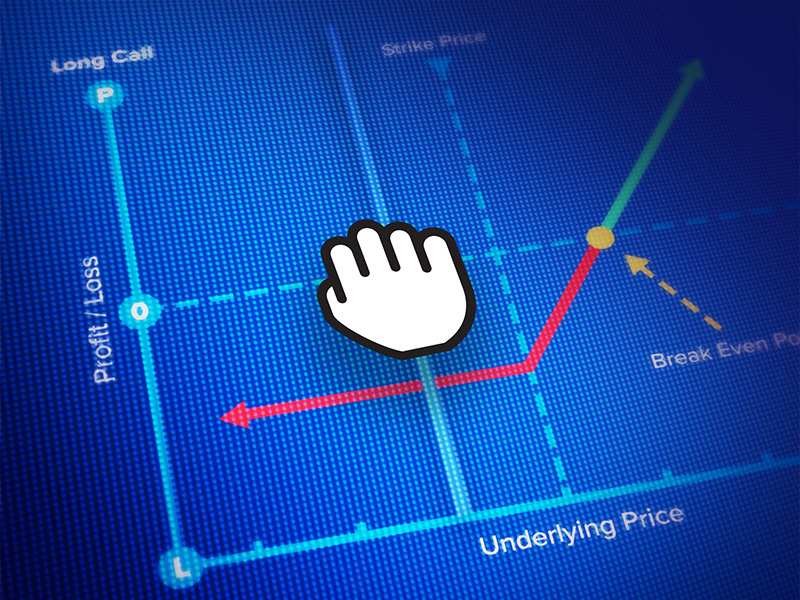






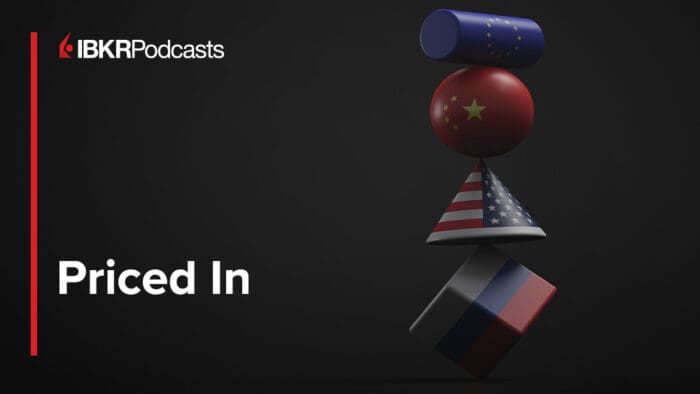
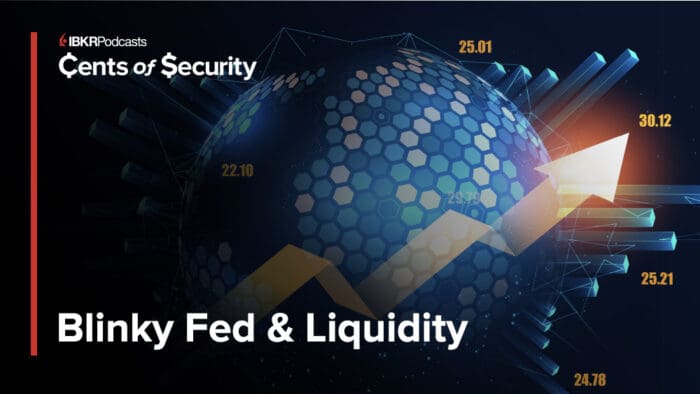

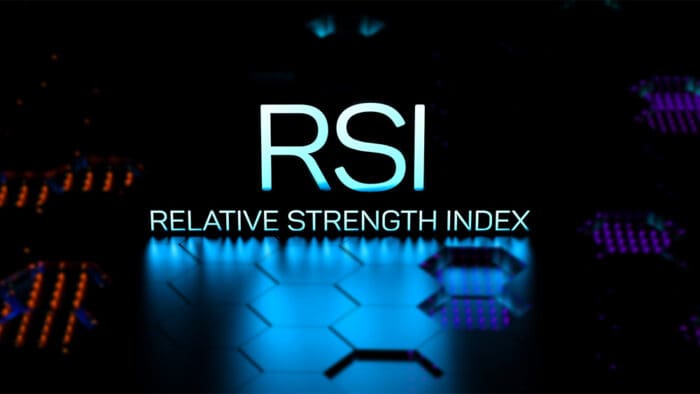

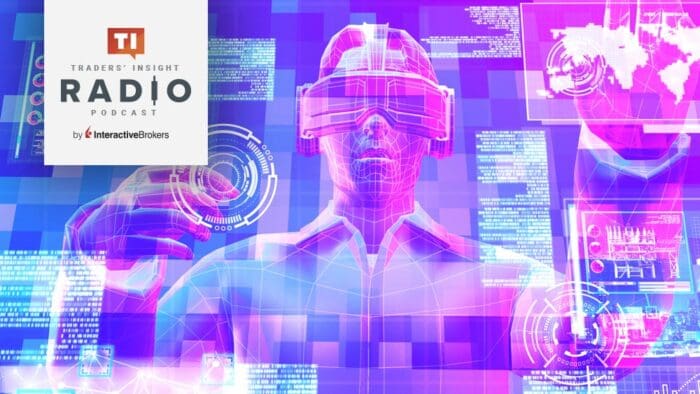

Join The Conversation
For specific platform feedback and suggestions, please submit it directly to our team using these instructions.
If you have an account-specific question or concern, please reach out to Client Services.
We encourage you to look through our FAQs before posting. Your question may already be covered!